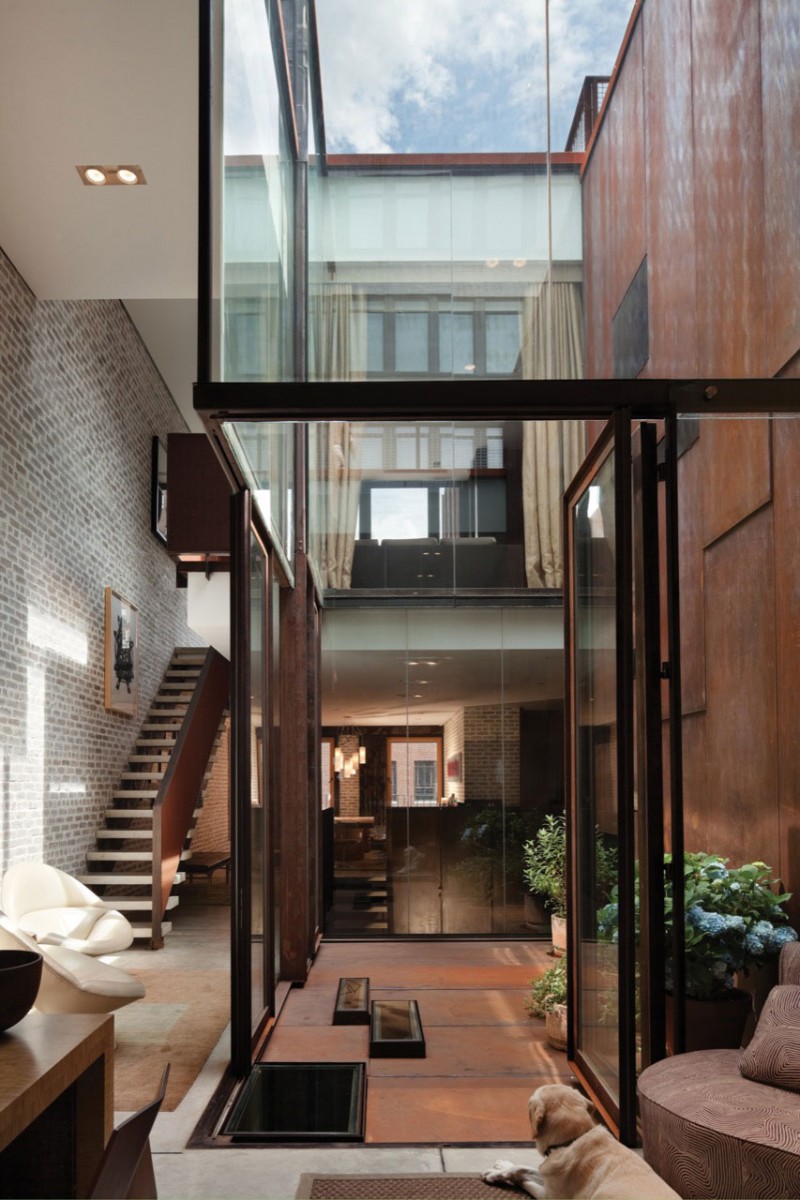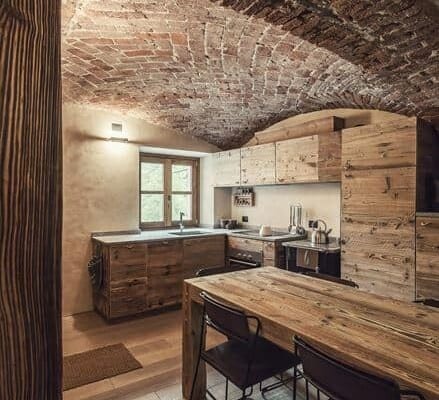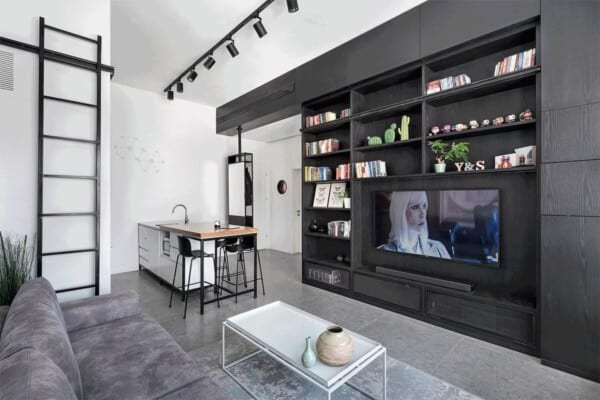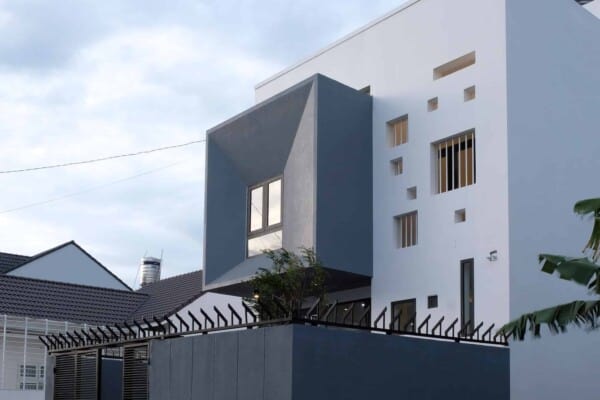New York City-based studio Dean-Wolf Architects has completed the Inverted Warehouse-Townhouse project in 2010.
This 10,500 square foot five-story apartment (!) is located in a former warehouse townhouse in Tribeca, New York City, USA.
Inverted Warehouse-Townhouse by Dean-Wolf Architects:
“The Inverted Warehouse/Townhouse is an addition and renovation of a Tribeca loft building. The existing structure, a traditional New York warehouse covers the entire lot, consuming the exterior space traditional in domestic construction. Inverting the conventional townhouse organization recovers this coveted ground. Dissipating energy into the dark center of this converted warehouse, three double story voids animate the missing “garden” of the townhouse providing light, air, and visual contemplation.
Admitting light and townhouse “garden” uses, these new spaces provide the structure for domestic life. Exterior court, reading court, and playroom are suspended into the void. Conceived as new construction built upside down into an existing building, they dissipate a radiant energy into the host.
Self structuring corten steel panels are suspended into the voids, their shingle style layering allowing the frameless burgundy glass to float down through the walls. The suspended corten structure extends into the double height volume of the playroom with two story shelving. Continuing the flow of dissipating energy, the downward trajectory opens the floors of the lower levels, inserting two glass floors. Framed with rolled corten sections, they connect the spaces vertically while opening them to light. Countering the downward hanging of spaces is a courtyard layer of silicone-glazed glass, which lifts delicately to the skyline.
Consistent with the logic of inversion, the main entry is onto the fifth floor. Opening onto the tense juxtaposition of exterior and interior voids, the garden lifts to the rooftop while the stair court descends into the private spaces. Two sequences separate public and private routes through these spaces. The upward route joins the public spaces, ending in a continuous roof deck inhabiting the larger space of the city. The downward route traces the inversion into the bedrooms, playrooms, and study through the stair, culminating in the glass floors and extending a view back up through all the gardens to the sky.”

Photos by: Paul Warchol
Source: ArchDaily









































